Your cart is currently empty!
Mirage of a Chinese Garden 镜花水月
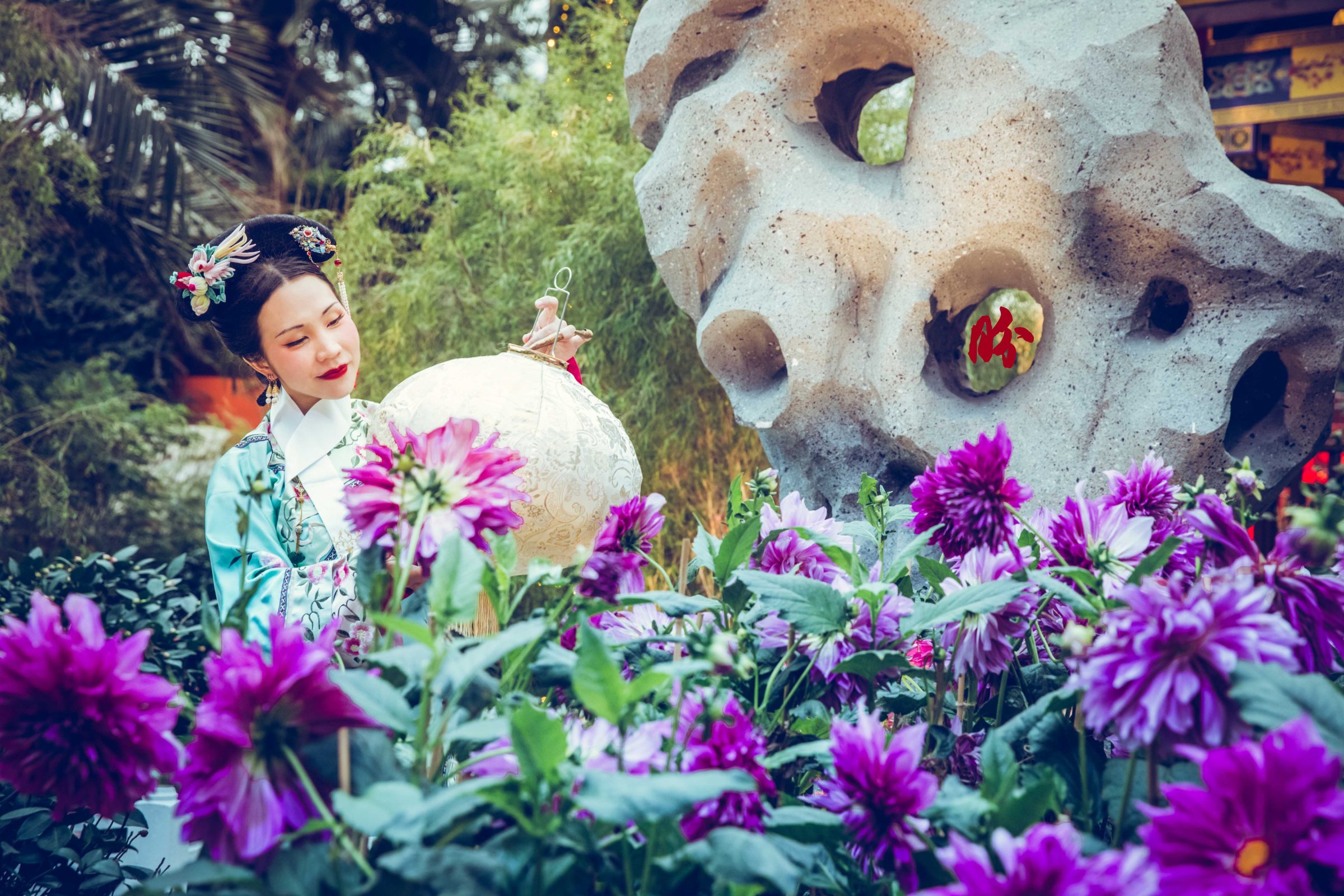
Tomorrow’s the western Valentine’s day, and in a few days more we’ll be celebrating the Chinese valentine’s day, thus this article.
A while ago we had a lecture by Jonathan Tan, founder and owner of Blanc Studios, on Chinese gardens. Jon learnt Ikebana from young and is extremely knowledgeable in Chinese architecture and gardens and uses a lot of East Asian aesthetics in his floral design and creations. We were all pleasantly surprised by what we learnt about the Chinese philosophy of a garden and how it was a paradigm shift from the West. The Japanese garden, though inspired by the Chinese garden concept took on its own form and trajectory of development as well!

In an ideal Chinese garden, as I’ve learnt from Jonathan, there’re meandering paths which offer you a different perspective of the garden layout every turn you take. The entire point is not to get from point A to B, but to enjoy the entire walk through it and be surprised by the unexpected sights along the way. In certain more elaborate designs, there would be a pavilion which opens up to 4 directions, each offering you a view of a different season. This reminds me of the ancient palaces which were built to mirror the seasons and the emperor would stay in different side of the palace during the changing seasons in alignment with the 5 elements. You can watch an episode on Chinese and Japanese garden HERE, hosted by Monty Don, a British celebrity gardener (of course, the Brits love their gardens too! of a completely different aesthetic philosophy!).

There were also a lot of odd-shape rocks which reminded the Chinese of the peaks and valleys of actual mountains like Huangshan (yellow mountain) and likes. If you have seen a Chinese landscape on a foggy day (or early morning on a cooling day), you would realise just how realistic the Chinese paintings are (contrary to what western art historians like to say about Chinese paintings being abstract).
And it is interesting how everything were in shades of greys. I had the pleasure of travelling to this ancient town in central China a while ago, and the entire town was covered in thick fog in the early morning and late night. You could sit by the wooden stilt balconies by the river at night, and see the fog move past you. In the morning, if you get up early enough, you can catch the ethnic Miao ladies in their traditional wear and baskets around the backcrossing the bridge. One of my most memorable and recouperative experiences.
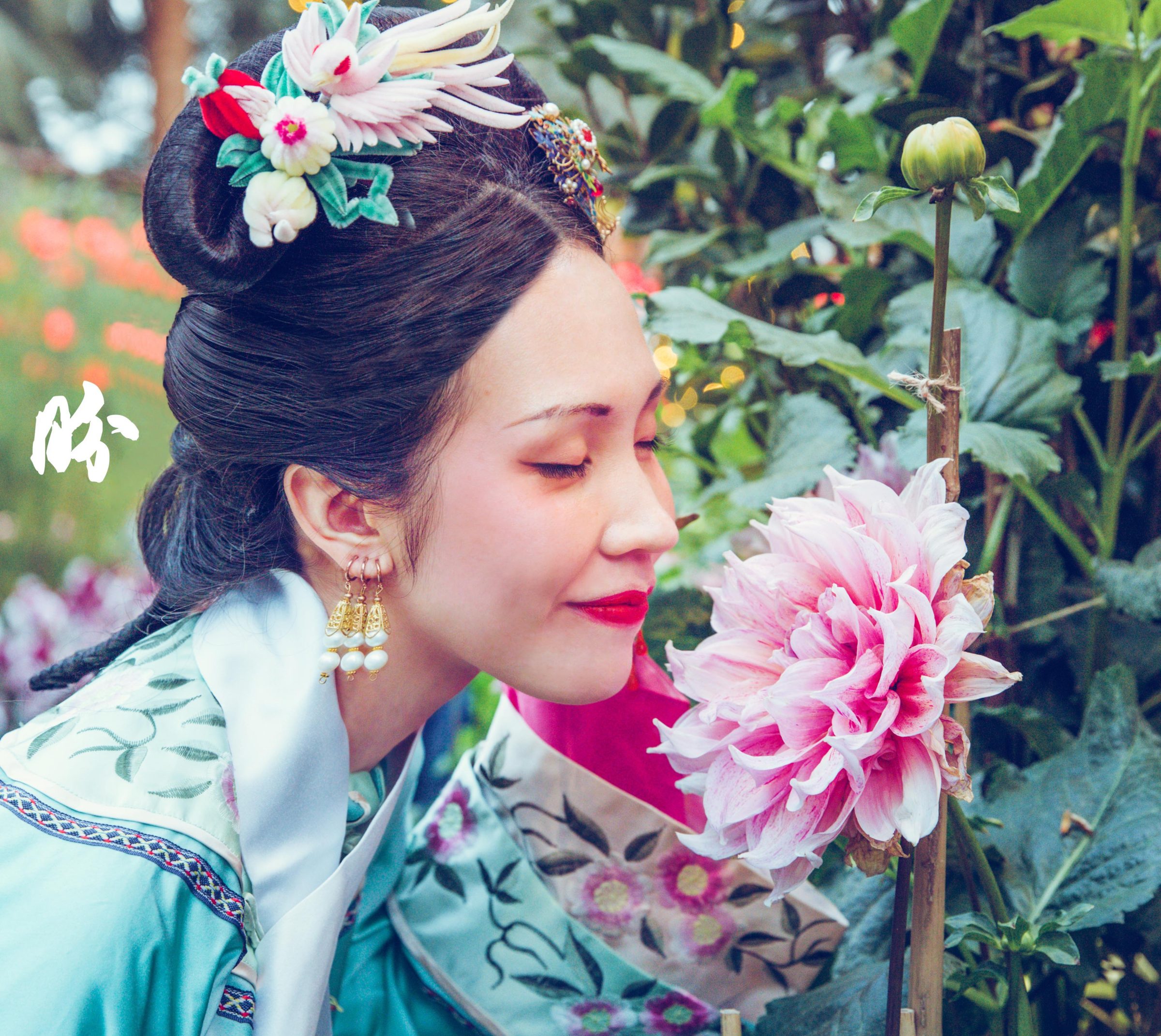
I did not know anything about the Dahlia flower until this shoot, because it’s non-native to China. But I fell in love with the dinnerplate Dahlia that can grow to as big as one’s face! I wonder if the Tang dynasty women would fall in love with Dahlia as much as they love the Peony!
But I would imagine the imperial court getting ready for the largest lantern/light festival of the year in the day by hanging lanterns. and there would be long walkways built with fancy lanterns and large lantern displays in other more open spaces.
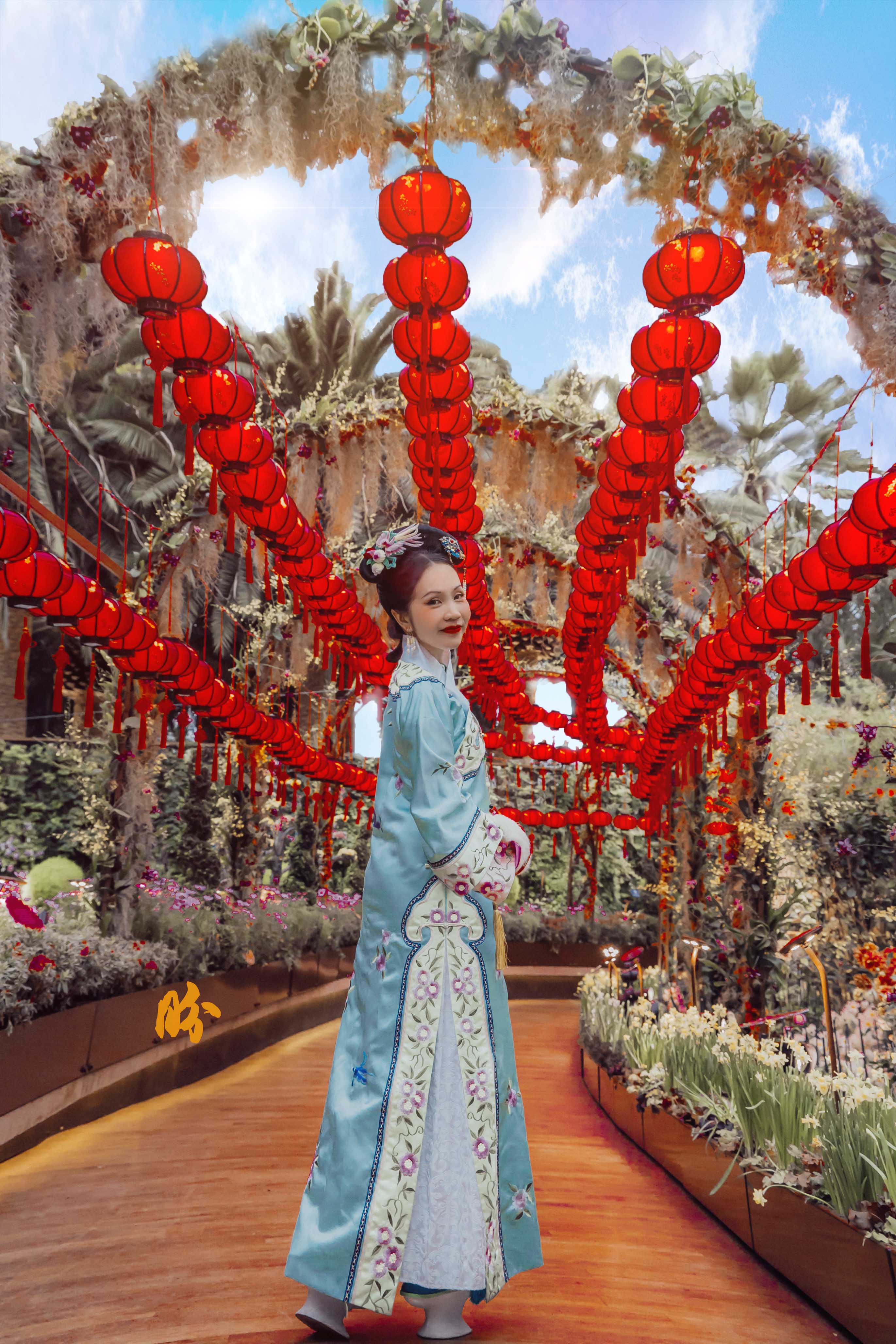
That’s day time at the imperial garden of Qing dynasty (1644-1911). Maybe. 😛
When night fell, I slipped into a Ming dynasty style (1368-1644) for the three reasons below:
- The Forbidden City, although mostly associated with the Qing dynasty, was actually built in the Ming dynasty and continued to be constructed and resided by the Manchurian rulers of Qing dynasty after conquering and taking over China from the Ming dynasty Han Chinese rulers.
- Although Manchurian rulers mandated for all Han Chinese to adopt the Manchurian ways of dressing, Han women were exempted from this and women could still wear Ming dynasty dresses.
- Throughout history, the nomadic tribes have always looked up to Han Chinese culture as a “high culture” and as a result, emperors and concubines would also occasionally “cosplay” by wearing Han Chinese dresses. There were even portraits of emperors and concubines in Han Chinese wear that survived till today. Of course, they wore mainly the late Ming dresses while I was wearing the early Ming one.
NIGHT FALLS
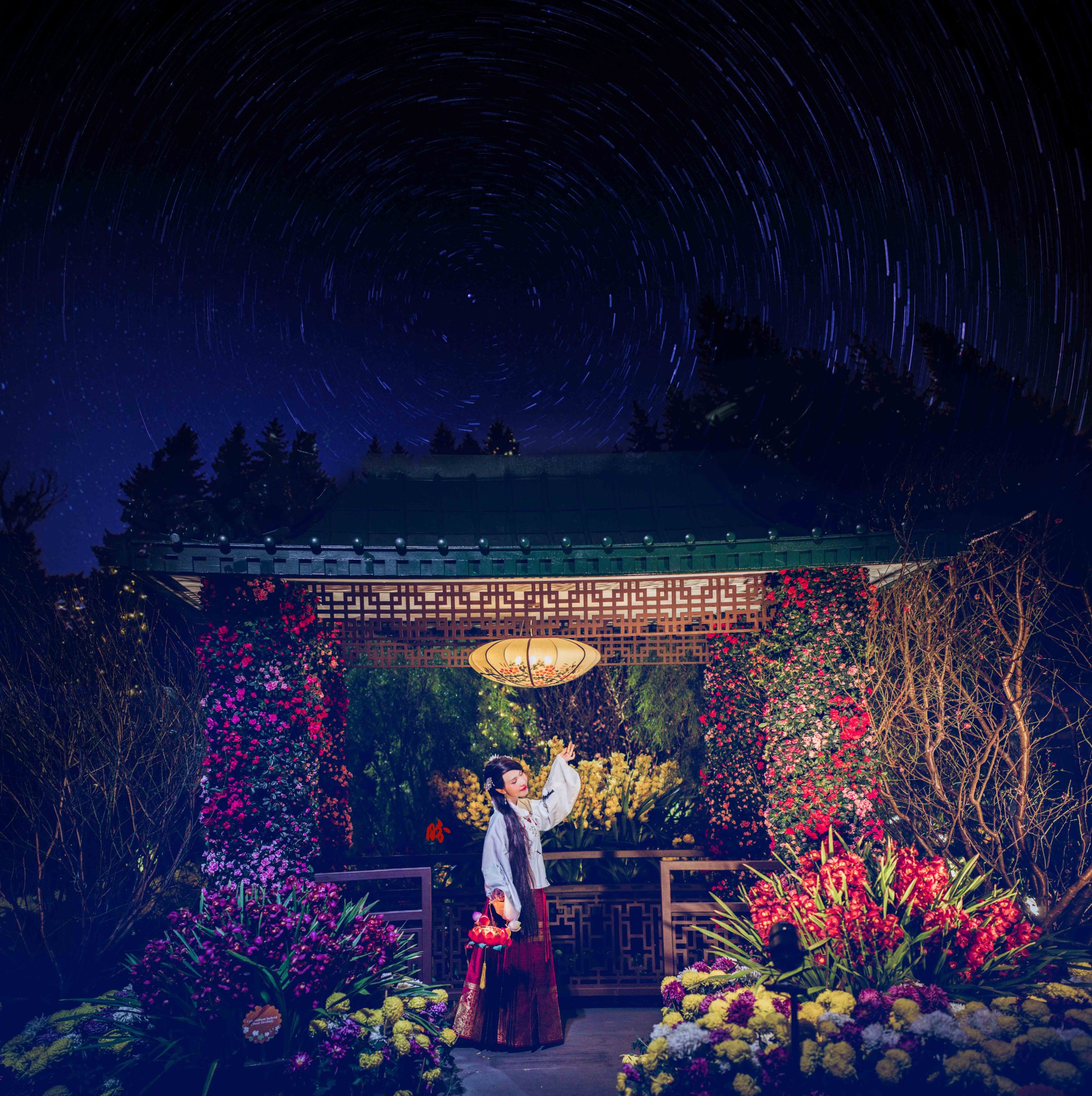
The ancient Chinese believed that the sky is round and the earth is square/flat, and so their pavilions were also built with that in mind. Most of the pavilions would have a circular top, and a squarish/angular bottom. Of course, traditional Chinese pavilions are not as decorative and fancy as Chinese aesthetics emphasises the negative space a lot. So having nothing means so much more to the ancient Chinese than having something there–leaves a lot more room for possibilities and projection of ideas from the viewers’ perspective.

If you are familiar with my work, you would realise that I RARELY have women with their hair down. This is because technically, women are supposed to comb their loose hair back after coming of age (15 yrs old) and it would be seen as inappropriate to have loose hair around. That being said, there were also other proofs that occasionally women did let down their hair in history (see what I did there? :P) and in this case, I would also like to allude to the courtesans residing in the Green Mansions (subtle subtext) who were like the geishas and were admired for their artistic and literary talents in the late Ming and early Qing period. The most famous few were the 8 beauties along the Qinhuai River (southern China around Nanjing).
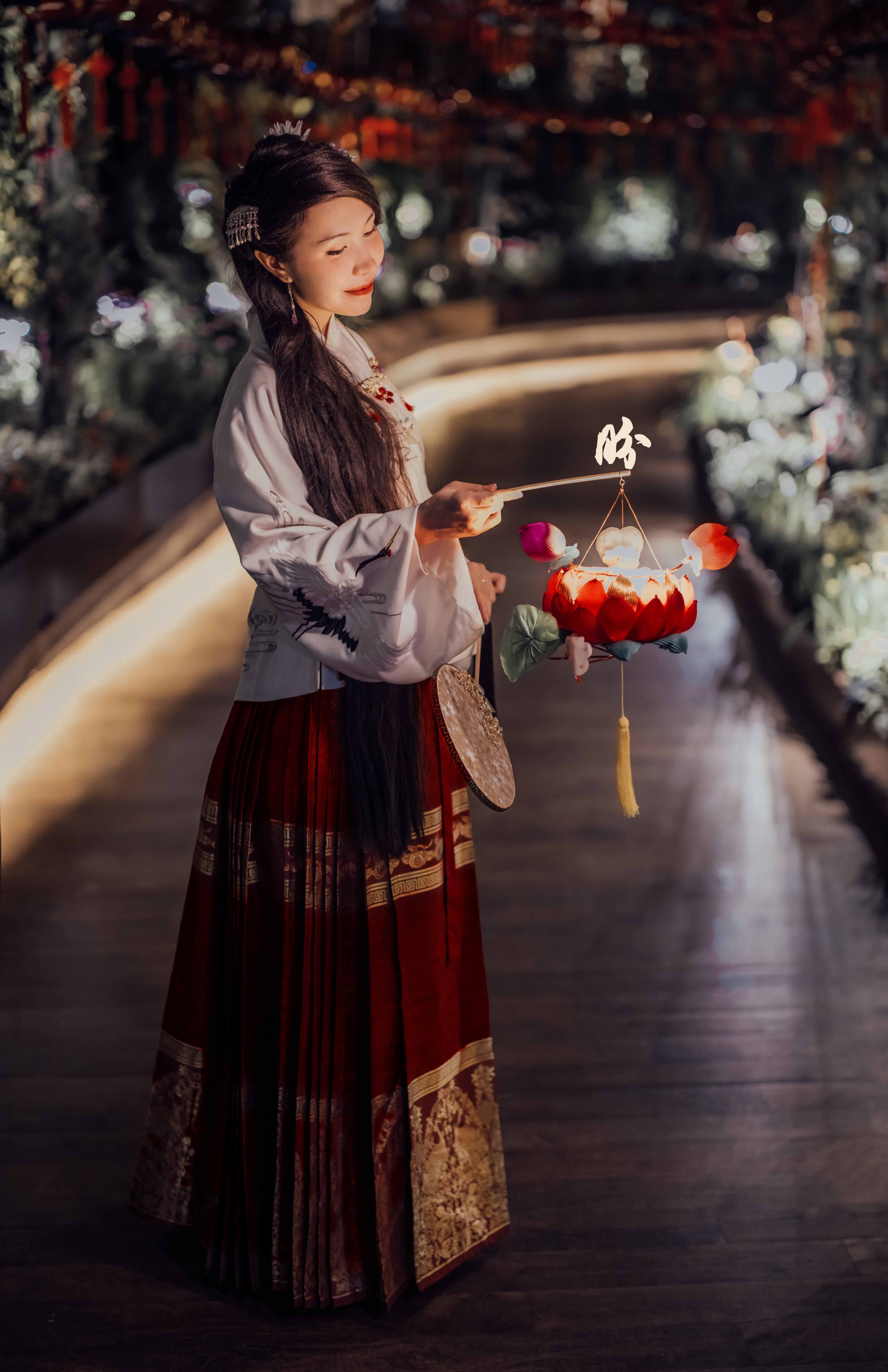
The term Green Mansion was originally used to refer to the grand buildings where kings and nobles lived. Over time, it became a term used to describe the grand places of dwelling of the best courtesans before eventually being loosely used to refer to brothels. It must note that the practice of Geisha was heavily influenced by the courtesans of Tang dynasty China where women were valued for their talents and not so much their looks. Their presence was appreciated by extremely learned or influential men they were brilliant hosts of parties and gatherings. Top scholars in Tang dynasty would be parading around accompanied by the courtesans as part of their celebratory parade. Even the Song dynasty emperor had to beg for the love of the top courtesan, who unfortunately preferred someone else to him.
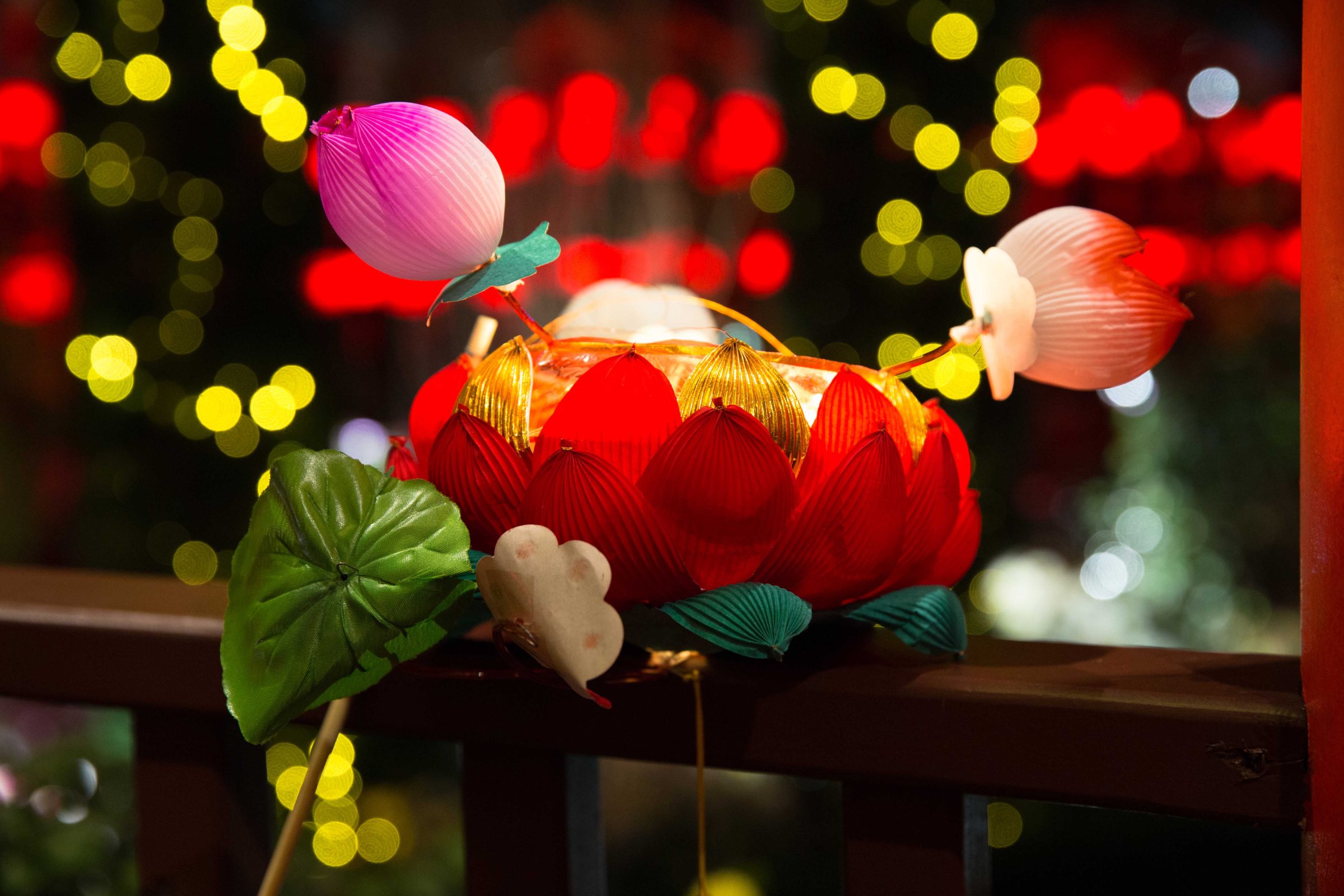
Of course, there’s nothing more fitting than to pair the Qinhuai lantern (which also started in Ming dynasty) with a Qinhuai courtesan! This entire lantern is handmade from many small pieces of paper folded into shape. Extremely delicate and one of the most beautiful lanterns I’ve ever laid my eyes on! My Chinese friend gifted it to me as she knows how much I love intangible cultural heritage crafts!
There are a few Chinese Valentine’s Day, and the upcoming one which on the 15th day of the first month of the lunar new year (this year it’s on 19 Feb 2019). Traditionally, women were allowed to get out of their house on this date, with lanterns and all, and by Tang dynasty China (about 7th century), people could roam the streets freely to see the majestic lantern displays at night for 3 nights in a row (Yes, there’s a state-imposed curfew otherwise).
More mid-autumn festival than mid-autumn festival. If you know what I mean.
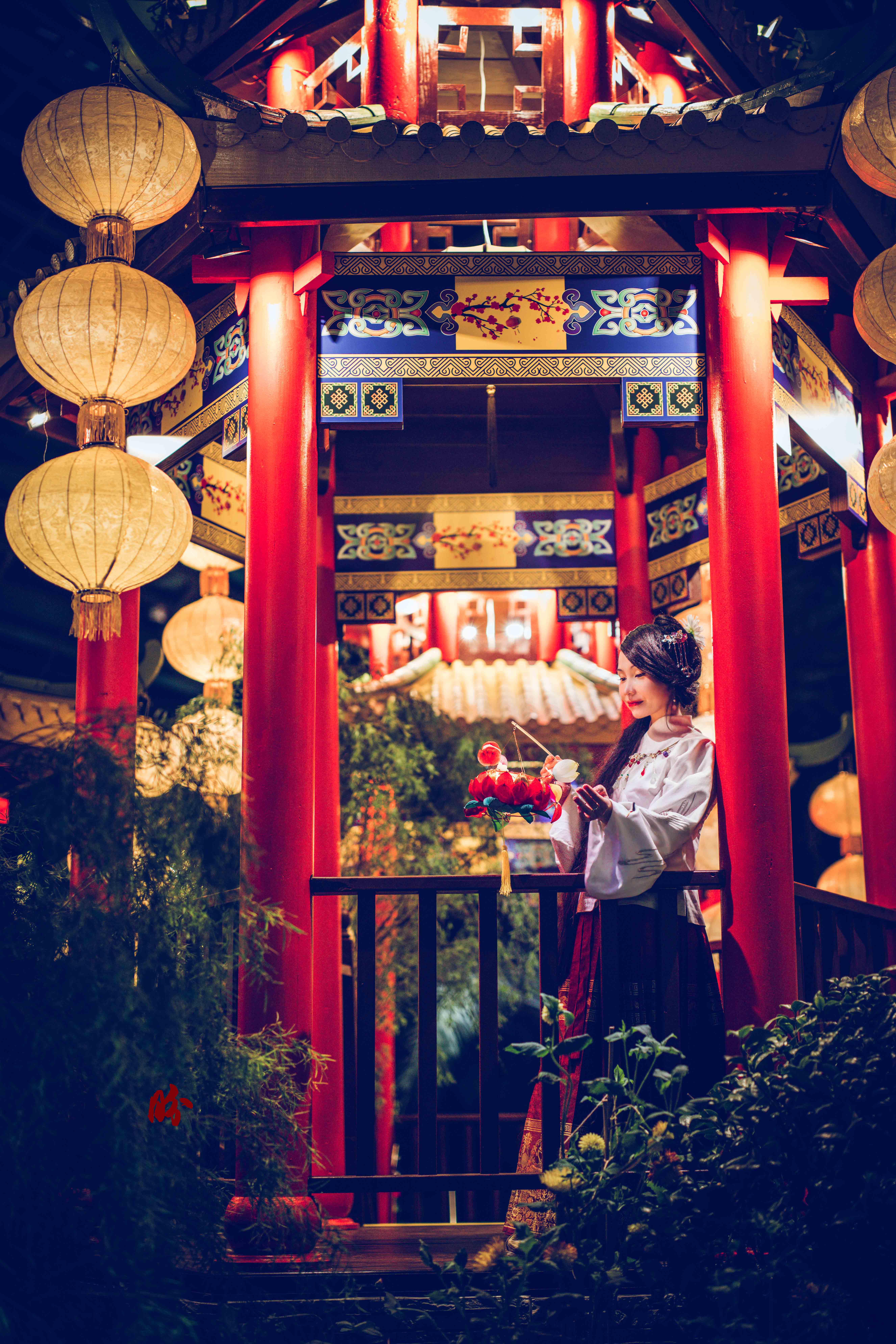
The night comes alive with all the celebrations, performances, firecrackers, and of course, boy meets girls.
Traditional love stories of boy meets girl in ancient China usually happens during this period/on this date. However, in reality, the modern understanding of love rarely existed between married couples and were more prevalent between the courtesans and their patrons. This is an area of great interest because in recent years, Chinese courtesans have been orientalised and eroticised by bad TV shows and it does present a very different perspective of gender equality in ancient Chinese societies.
I am still gearing up for a very intimate, immersive performance which brings to life Tang dynasty courtesan lives and their parties next year (fingers crossed). But so far, the research has been nothing short of fascinating. I’ll reveal more in time to come but it definitely challenges many of our current assumptions of women and courtesans of ancient China. They were like the original geishas.
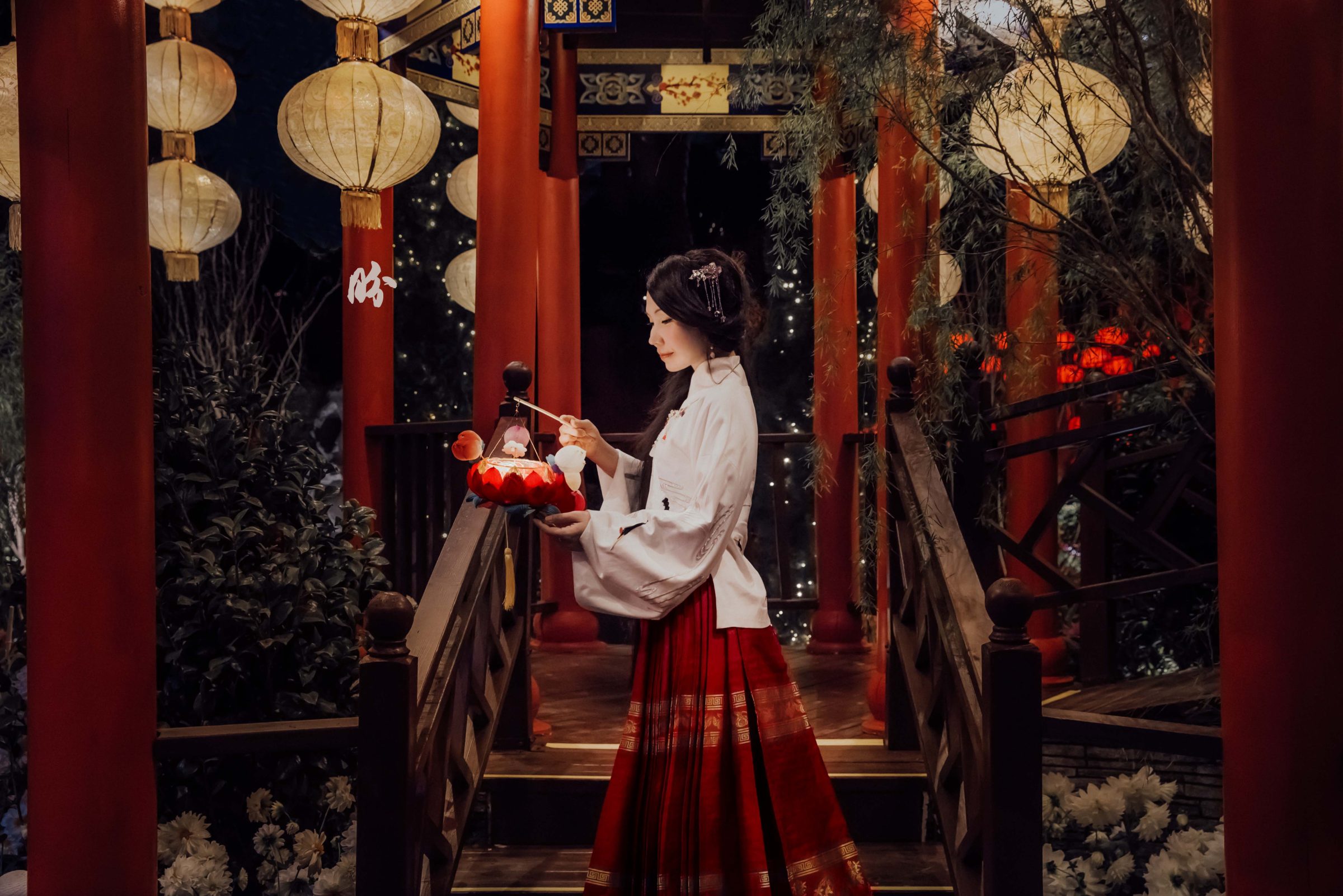
And since we’re approaching the 15th day of the 1st month of the Lunisolar Chinese calendar AKA The Lantern Festival, thought of just giving you a big moon with some nice reflections to ponder and have some fun playing a Hanfu edition of “Where’s Wally”. I’ve hidden two peonies (one orangy-red and one red) and a butterfly in the picture.
The piece below I’ve decided to call it Mirage of full bloom (镜花水月 jing hua shui yue). The Chinese title is an expression that is often used to refer to things that are beautiful yet unattainable, but its beauty remained in the deepest of our imagination. It literally translates to The flowers’ reflection in a mirror, the moon’s reflection in water.
Have fun!
All original images were taken at the Gardens by the Bay Dahlia Dreams floral showcase by Dressed Up Dreams Photo Studio (aka my good friend Sharon). We edited the images ourselves separately because we have different editing styles. So you can have a look at her edits for variety as well! 🙂

2 responses to “Mirage of a Chinese Garden 镜花水月”

It occurs to me that the 18th century English “landscape garden” may have been influenced by these ideas you mention about Chinese gardens. The process of creating them was fairly brutal to the land involved, but the idea of cultivating picturesque views from various points, the reflections of nature as it occurs untouched by humans, and the meandering path that may or may not lead anywhere in particular … these remind me of the development in English gardening which uprooted the strict, geometric, parterre styles that so loudly announced Man’s control over Nature. Politically, I’ve always seen this as a sort of expression of the tension between England and France (and Italy, I suppose, et al). I have fewer ideas about how China comes into the picture, but given the position of orientalism in the development of English Taste in that period (Taste was a Big Thing at the time, which is why it’s capitalized), I suspect there was a strong influence from China, however obscured by the anglicization. How VERY interesting!
To see more of what I mean in terms of English gardening, see the gardens at Stowe House, which I think remain an example of this style. Also, the only relevant garden designer who comes to mind at the moment was called “Capability” Brown. I likely only remember him because his nickname was given him for telling his clients their gardens had “capabilities” in the same way you might expect someone to say, instead, “possibilities”, and that always made me giggle.
It seems I’ve already been too long-winded in my comment! Rather than comment similarly on the rest of the information you’ve presented, I’ll just say the photos are lovely, and you’ve given me several nodes to start from in looking into new things. Thank you!
Oh, and I found the peonies and butterfly, but I won’t say where, so as not to ruin anyone else’s fun!

It’s really gorgeous. The pictures are Regal. I can only imagine how it would have felt to be in your place, with sweet, pleasant night breeze around me, comfy in my warm, heavy and beautiful traditional dress, my hair freely down and the warm, live hues of lanterns around me.
Festive season nights are ALWAYS the best, capturing the liveliness of the day minus the too-brightness and heat and sweat. Only the pleasentness and peace remain.
I would love to see how you would capture a Chinese Vesak night, one day.

Leave a Reply